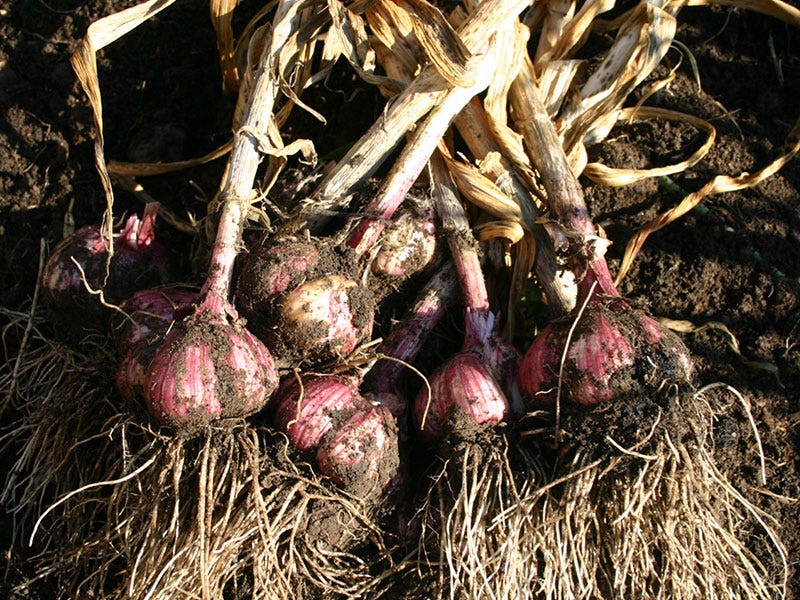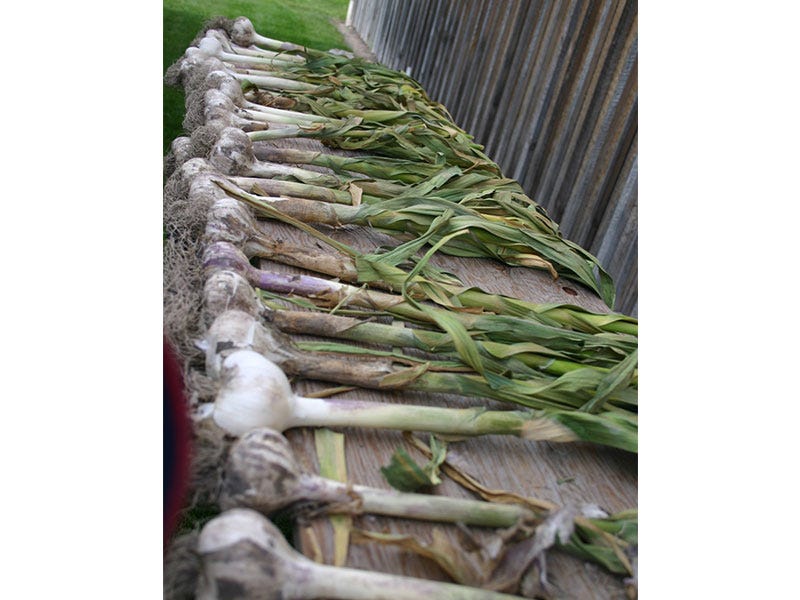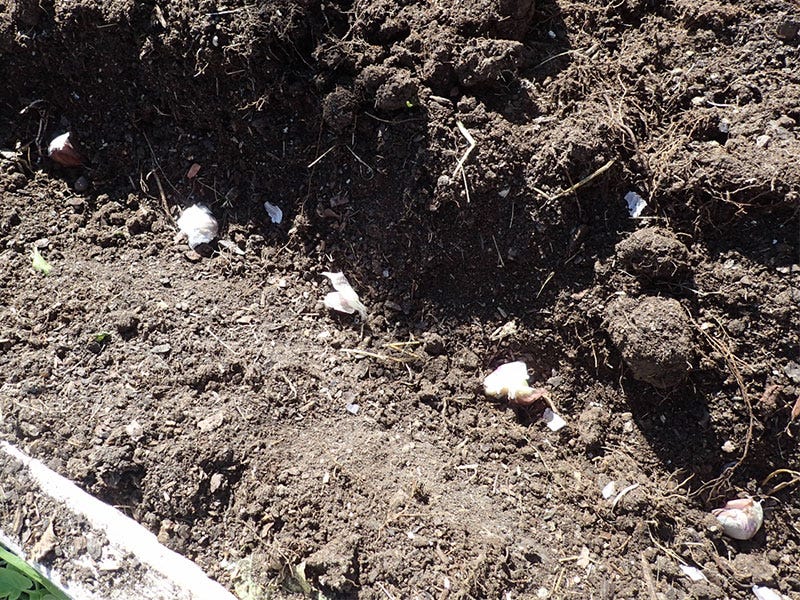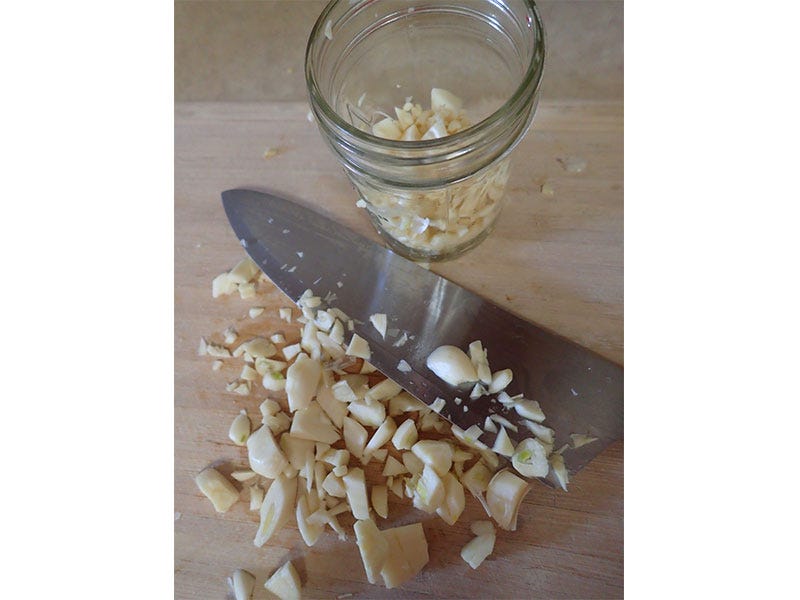Spicing up Next Season: When and How to Plant Garlic


As someone with a Hungarian background, garlic is part of the Holy Trinity (garlic, onions, and paprika) of cooking. We use it in dishes from breakfast to supper, along with eating it for its immune boosting qualities. Whether it’s the pungent hardnecked varieties or its versatile softneck sibling, garlic is one of those must-have ingredients in the kitchen.
The good news is garlic is easy to grow pretty much anywhere in the country, and it’s one of those crops were putting a little time in the fall reaps the benefit next summer, making it one of those enjoyable autumn tasks.
Plant Softneck Garlic to Last the Winter
From mild to a hot there is a multitude of garlic varieties between the main subspecies with hardneck and softneck garlics being the most popular. The type you choose depends partly on your climate, as well as your taste preferences.
Getting ready to plant? Check out our selection of planting supplies here.
Softneck garlic, particularly the ‘Artichoke’ and ‘Silverskin' varieties, typically have smaller bulbs with more cloves (albeit smaller ones) per head. These varieties are often found in the grocery store and are more often used in dishes where they are eaten raw (such as in salad dressing) or lightly cooked. They have a softer stem and do not produce scapes. The curly flowering stalk that forms on the top of the plant in the summer is excellent for braiding because of its more pliable stems. Softneck varieties also store the best throughout the winter.
The one drawback is they are supposedly not as hardy as the hardneck varieties. Although they still manage to survive the winter even in Montana, and in regions where freezing and thawing cycles, particularly combined with extreme cold, are common. In this case, mulching them (which is a good idea anyway) with several inches of straw to provide an extra layer of protection is even more important.

The Big Bulbs and Big Flavor of Hardneck Garlic Varieties
Hardneck varieties such as ‘Porcelain’, ‘Rocambole’, and ‘Purple Stripe’ have the tall, thick stems that produce scapes, which should be cut in the summer to allow the plant to focus its energy into the bulb. This is an extra benefit since the scapes are delicious chopped and sauteed in butter with whatever is ready in your garden at the time. You can even pickle them for a garlicky treat during the winter.
The hardneck has fewer cloves per bulb, but they are usually larger and easier to peel. They might not keep for as long as softneck varieties during the winter, but if you like roasting entire heads, this is a good choice.
In reality, you can’t go wrong with either variety. It’s simply a matter of choosing which one works best for the type of bulbs you like and how long you wish to store them.
Did you know garlic is a natural cold remedy? Read about it here.
How to Find the Best Garlic Bulbs
Although ‘Artichoke’ softneck garlic is often found in grocery stores, look for a local source to plant in your own garden. Choose firm, solid heads that have not sprouted, and do not have obvious cuts or blemishes.
What variety you choose depends on what flavor you desire. One of my favorites is the ‘Purple Stripe’ since it produces large cloves and is fairly mild, so it can be used in a variety of dishes. They also make large bulbs and have won first place at the Montana State Fair on many occasions. For a spicier option, plant the Korean varieties for an extra kick of flavor.
And keep in mind that the larger the clove you plant, particularly with the hardnecked varieties, the larger head you’ll have in the end. Choose accordingly if you want to grow large bulbs.

Preparing the Planting Site
Garlic isn’t particularly fussy, but it does not like heavy, clay soil. In this instance, consider building a raised bed with amended soil to improve your chances of an excellent harvest. Before planting in any location, it’s always a good idea to add compost and well-aged manure to give the garlic ample nutrients to grow healthy bulbs.
When and How to Plant Garlic
Plant garlic 4-6 weeks before the ground freezes, which can be anywhere between the middle of September to the end of October.
When you’re going to plant, pull apart the head, leaving the papery outer covering on the individual cloves. Dig a trench 3-4 inches deep and place the clove pointy side up roughly 4-6 inches apart, depending on the size of the bulb. If it’s a large-headed variety give it more space. Cover with soil and mulch with four inches of straw. You don’t need to water it as you do not want to encourage growth at this time. The garlic needs to remain dormant until the soil warms in the springtime.
Looking to plant in straw bales? Learn how to here.
How to Care for Garlic in the Spring
You know spring has finally arrived when tiny green shoots emerge from the straw mulch. This is when you can remove it, or leave it as a way to repress weeds, which is the biggest detriment to raising garlic. Even if the rest of your garden is neglected, weed the garlic patch if you want to harvest nice-sized bulbs.
Keep the garlic consistently watered throughout the season and fertilize it with a balanced fertilizer while the garlic is actively growing. For side-dressing, work in the fertilizer an inch deep 3-4 inches from the bulbs every 3-4 weeks until the bulbs start to form in May or June. Water-soluble fertilizers can be applied every 7-10 days. If you wish to feed the garlic organically, work in blood meal early in the season, and water the growing sprouts with a fish emulsion spray until the bulbs begin to take shape.

Snip the Scapes
When the scapes form in June and July, snip them off just below where it begins to curl, and use this garlicky treat in early summer dishes. If you can’t use them all at once, you can chop them into 1-inch pieces and freeze them to add to soups, stews, or sautéed dishes.
Another treat is garlic scape pesto. Instead of using basil, chop the scapes and blend them with olive oil and parmesan cheese. This is particularly delicious with chicken and pasta.
Garlic Scape Pesto Recipe
1/2 pound garlic scapes (roughly 18-20 of them)
1/4-1/3 cup olive oil
4 T. freshly grated parmesan cheese
1/4 cup pine nuts or sunflower seeds
1/4 tsp. salt
~ Roughly chop the garlic scapes and place them in a food processor.
~ Process for a few pulses, then add the olive oil, nuts/seeds, parmesan, and salt and blitz until it makes a chunky paste.

When to Harvest Garlic
Stop watering the garlic when the stalks begin to yellow, and harvest within a few weeks. This is typically towards the end of July in Montana. It’s important to dig them shortly after they ripen because they will soften if left in the ground and will have to be used immediately.
Ready to harvest? Shop our gardening tools here.
Lift them gently with a garden fork, brushing off excess soil before spreading out the garden in an area that is out of the sun to allow it to cure for a week. Softneck garlic can be braided at this time.
Cut off the roots and trim the stalk to within an inch of the bulb, and store in baskets that provide air circulation in an area around 60-65 degrees. If it’s warmer, it might not last as long, but will still keep well into the winter.
Plant Now to Enjoy Later
Even though the garden tasks are wrapping up for the year, it’s well worth the effort to plant garlic now to have it on hand throughout next winter. Choose your favorite varieties and plant the best bulbs for a bumper summer crop.
